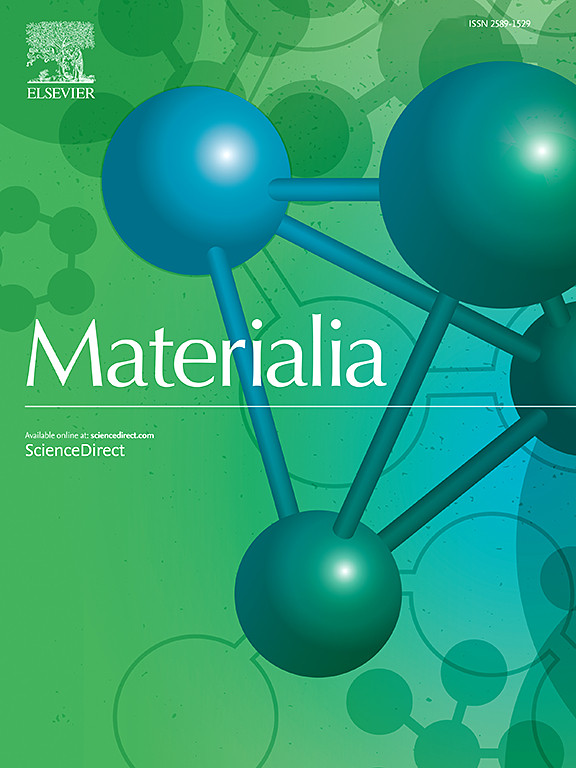Spatial gap solitons due to photonic lattices in photorefractive SBN crystals: An ab initio investigation
IF 3
Q2 MATERIALS SCIENCE, MULTIDISCIPLINARY
引用次数: 0
Abstract
This manuscript presents the results of the first-principles calculations revealing the suitable candidature of strontium barium niobate (SBN) photorefractive crystals using globally accepted WIEN2k codes. These computations confirm the good candidature of SBN crystals for photorefractive nonlinear optics and the ensuing applications. Using the DOS, band structure, and optical investigations, these first principle computations address bandgap creation and estimate, directional-dependent refractive index calculation, and absorption coefficient estimation. Optical spatial gap solitons in SBN photorefractive media with Pockel's nonlinearity and an embedded photonic lattice have been the subject of further inquiry. We have setup and solved the paraxial Helmholtz equation along with the imprinted photonic lattice in SBN crystals. We have, for the first time uncovered the existence of many different types of single hump, double hump, and multi hump gap solitons across both the finite band gaps. Multi hump solitons found to exist are of both anti-symmetric and symmetric type with two distinct profiles being seen for the anti-symmetric multihump solitons across both band gaps. Stability of the solitons with respect to small perturbations has been studied in case of each type of soliton solution. Linear stability analysis reveals that all types of gap solitons, including the single hump, double hump and multi hump solitons are stable across both the first and second finite band gap which is quite a significant and novel finding. The linear stability analysis is duly confirmed by direct propagation simulations undertaken using the finite difference beam propagation method.

光折变SBN晶体中由光子晶格引起的空间间隙孤子:从头算研究
本文介绍了第一性原理计算的结果,揭示了使用全球公认的WIEN2k编码的铌酸锶钡(SBN)光折变晶体的合适候选。这些计算证实了SBN晶体在光折变非线性光学及其后续应用中的良好候选性。利用DOS、带结构和光学研究,这些第一原理计算解决了带隙的产生和估计、方向相关折射率计算和吸收系数估计。具有Pockel非线性和嵌入光子晶格的SBN光折变介质中的光学空间间隙孤子是进一步研究的课题。我们建立并求解了SBN晶体中伴随印迹光子晶格的近轴亥姆霍兹方程。我们首次发现在这两个有限带隙中存在许多不同类型的单驼峰、双驼峰和多驼峰隙孤子。发现存在的多驼峰孤子既有反对称型也有对称型,在两个带隙中都可以看到反对称多驼峰孤子的两种不同的轮廓。研究了每种孤子解在小扰动下的稳定性。线性稳定性分析表明,所有类型的隙孤子,包括单驼峰、双驼峰和多驼峰孤子,在第一和第二有限带隙中都是稳定的,这是一个非常重要和新颖的发现。采用有限差分光束传播法进行的直接传播模拟充分证实了线性稳定性分析。
本文章由计算机程序翻译,如有差异,请以英文原文为准。
求助全文
约1分钟内获得全文
求助全文
来源期刊

Materialia
MATERIALS SCIENCE, MULTIDISCIPLINARY-
CiteScore
6.40
自引率
2.90%
发文量
345
审稿时长
36 days
期刊介绍:
Materialia is a multidisciplinary journal of materials science and engineering that publishes original peer-reviewed research articles. Articles in Materialia advance the understanding of the relationship between processing, structure, property, and function of materials.
Materialia publishes full-length research articles, review articles, and letters (short communications). In addition to receiving direct submissions, Materialia also accepts transfers from Acta Materialia, Inc. partner journals. Materialia offers authors the choice to publish on an open access model (with author fee), or on a subscription model (with no author fee).
 求助内容:
求助内容: 应助结果提醒方式:
应助结果提醒方式:


